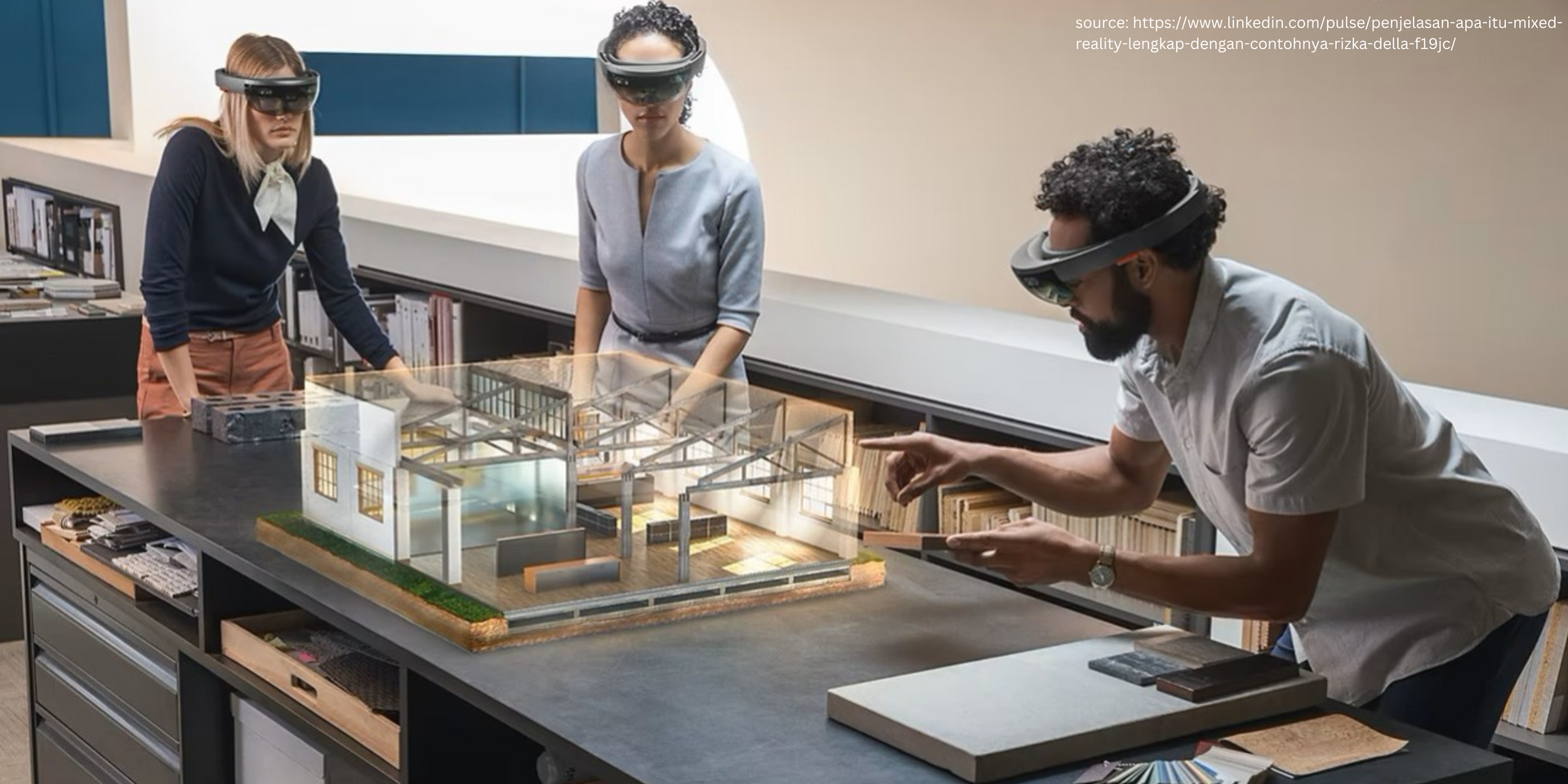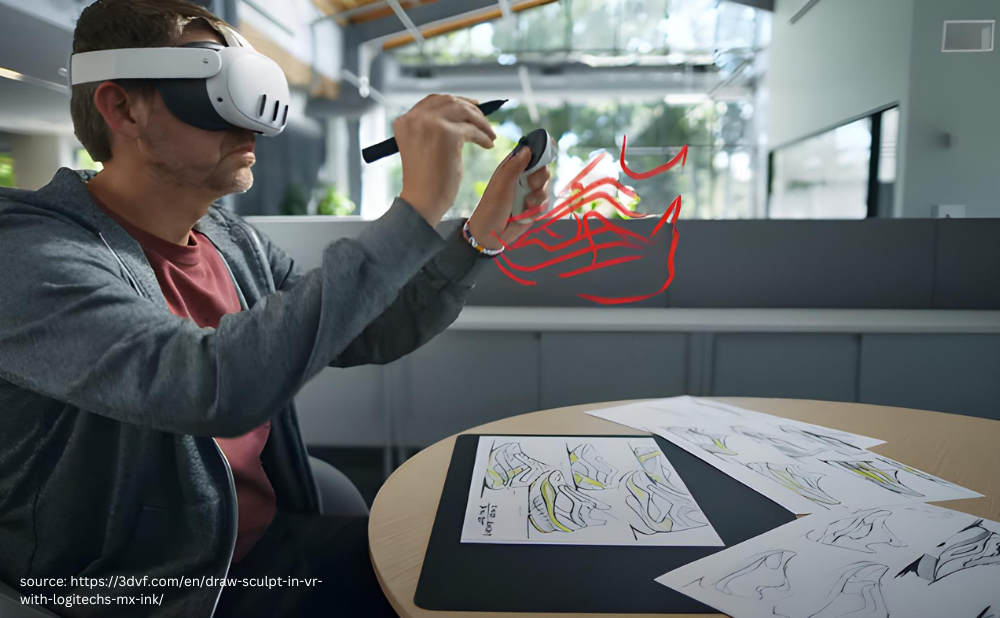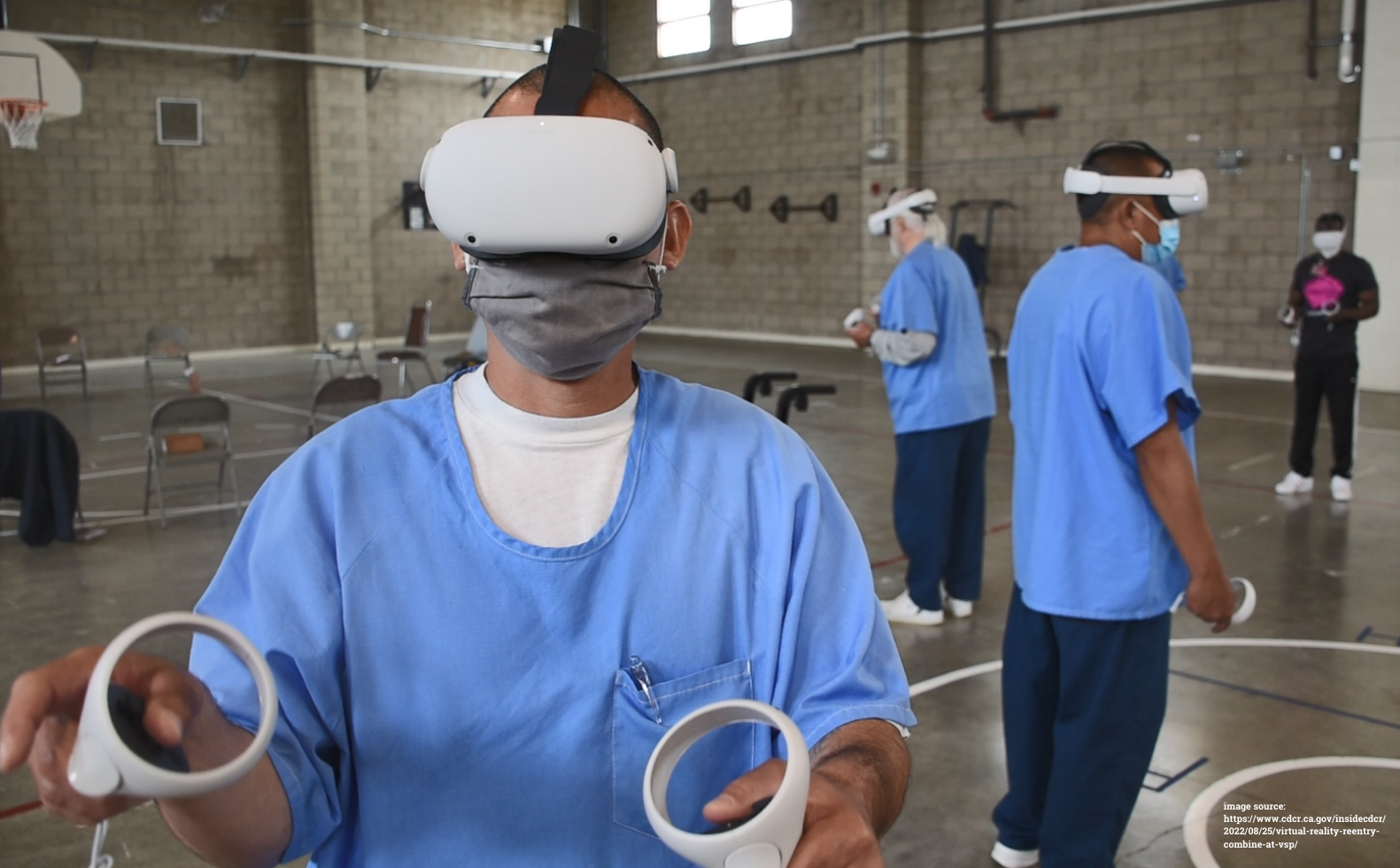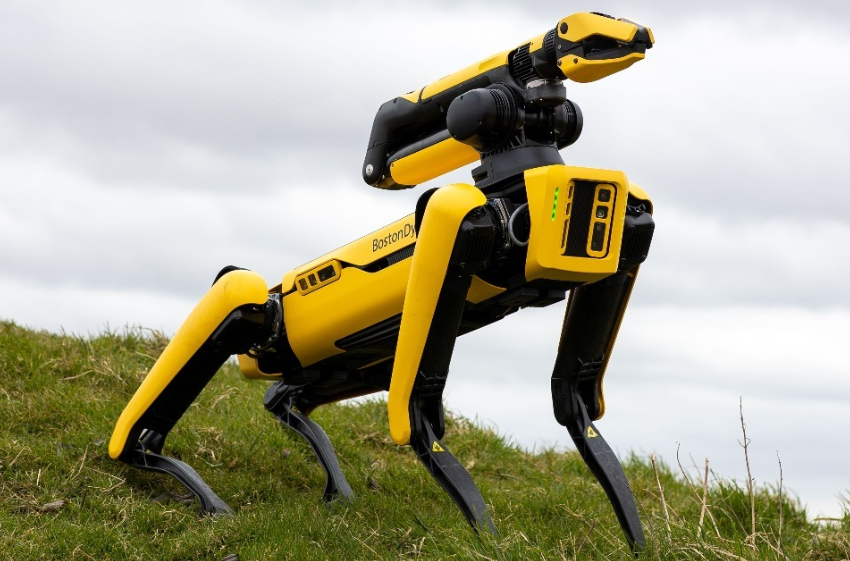How XR is Transforming Prototyping and Collaboration?

Picture this: You're an industrial designer, and you've just had a eureka moment for a groundbreaking product. In the past, you'd sketch it out, maybe create a 3D model on your computer, and then wait weeks for a physical prototype. But today? You slip on a VR headset, and suddenly you're standing next to your creation, tweaking it in real-time. Sounds like science fiction, right? Well, welcome to the world of Extended Reality (XR) in industrial design.
Let's face it, traditional product development can be a real headache. It's slow, expensive, and often feels like herding cats when trying to get feedback from team members scattered across the globe. But XR is changing all that, and it's doing it in style.
Virtual Prototyping: Your Design Playground

Remember when making changes to a prototype meant starting from scratch? Those days are gone. With XR, you're basically a kid in a digital candy store. Want to change the color? Done. Need to resize that component? Easy peasy. It's like having a magic wand for design.
- Goodbye, Budget Nightmares: Physical prototypes used to cost an arm and a leg. Now, with virtual prototyping, you can iterate to your heart's content without breaking the bank. Your finance team will love you for it.
- Time is on Your Side: Remember pulling all-nighters to meet deadlines? XR speeds up the process so much, you might actually get to enjoy your weekends again. Imagine that!
Collaborative Design Reviews: No More -
"You Had to Be There"

Ever tried explaining your brilliant design over a choppy video call? Frustrating, right? XR takes your global team and puts them right in the room with your design.
- Presentations That Pop: Forget about boring slideshows. With XR, you're not just showing your stakeholders a design; you're giving them a tour. It's like being able to shrink people down and let them walk around inside your product.
- Feedback at the Speed of Thought: No more waiting for emails or playing phone tag. In an XR environment, your team can point, gesture, and make changes on the fly. It's like a design jam session, but without the bad coffee and stale donuts.
Virtual Testing: Because "Oops" is Expensive in the Real World
Testing used to mean crossing your fingers and hoping for the best. With XR, you can put your designs through the wringer without the real-world consequences.
- Performance Under Pressure: Want to see how your product holds up in extreme conditions? Easy. Simulate arctic cold, desert heat, or even zero gravity. No need to book that trip to space (yet).
- User Experience - Without the Guinea Pigs: Get user feedback without the awkward focus groups. Virtual testing lets you iron out the kinks before a real person ever lays hands on your product.
- Safety First, Second, and Third: Testing dangerous scenarios used to be, well, dangerous. Now you can crash test to your heart's content without a single scratch.
XR, AI, IoT, and Beyond in Product Design
Imagine a product design workflow where AI suggests an initial design based on your parameters. You and your team enter an XR environment, manipulating the 3D model with natural gestures. IoT sensors feed real-world usage data into your simulation, while AI continuously optimizes the design based on your interactions and this data.
AI: Your Tireless Design Assistant
- Machine Learning for Optimization: AI algorithms analyze extensive design databases to suggest optimal parameters. For example, in automotive design, AI can propose aerodynamic enhancements based on numerous wind tunnel simulations.
- Generative Design: AI can generate multiple design iterations based on specified criteria. In XR, designers can visualize and interact with these iterations in real-time, allowing for immediate tweaks and refinements.
IoT: Bringing Real-World Data into Your Virtual Playground
- Enhanced Digital Twins: IoT sensors connected to physical prototypes create hyper-realistic digital twins in XR. These twins respond to simulated stresses based on actual data, providing invaluable insights for future designs.
- Predictive Maintenance Visualization: Designers can visualize wear patterns and potential failure points by integrating IoT data into XR environments, informing design improvements.
Spatial Computing: The New Design Canvas
- Gesture-Based Modeling: Designers can use natural hand movements to sculpt 3D models in virtual space, speeding up ideation and prototyping phases.
- Multi-User Collaboration: Spatial computing enables multiple designers to manipulate 3D models together in a shared virtual space, enhancing teamwork across distances.
- Design in Real-Time: Utilizing creation tools like ShapesXR, designers can seamlessly sculpt and test 3D models directly within the XR environment. By enabling instant feedback on layouts and interactions, it leverages gesture-based modeling and spatial computing to significantly reduce prototyping time. This tool allows designers to experiment with different configurations in real-time, making it an invaluable asset for faster, more precise iterations.
Sculpt, Sketch, Create: MX Ink Makes It a Reality

Imagine having even more control over your design process with a tool like the Logitech MX Ink. This stylus is compatible with Meta Quest headsets and allows designers to add virtual layers, make changes, and manipulate real-world objects with precision. Whether you're working on a 2D sketch or sculpting a 3D prototype, the MX Ink lets you write, draw, or even sculpt using different brush textures. It's like turning your VR environment into a tactile design studio.
With the ability to swap between the MX Ink stylus and Meta Quest controllers seamlessly, designers can choose the tool that best suits their workflow. The MX Ink brings an additional layer of versatility to virtual prototyping, allowing you to experiment and iterate without the limitations of traditional input devices.
5G: The Invisible Enabler
- High-speed 5G networks empower designers to collaborate in real-time on complex 3D models, accelerating the iterative process across distributed teams.
- 5G's reliable connectivity supports the Internet of Things (IoT) in design, allowing for data-driven decision making through real-time analytics from connected products and environments.
Haptic Feedback: Feeling is Believing

- Material Property Simulation: Advanced haptic interfaces use microfluidic actuators and electrostatic braking to replicate tactile properties of materials in XR environments. These systems allow designers to interact with virtual textures and material properties, enhancing digital prototyping fidelity.
- Force Feedback for Ergonomic Analysis:
Sophisticated haptic devices combine electromagnetic actuators and force-transmitting frameworks to generate precise kinesthetic feedback. This enables accurate simulation of sensations when operating controls and interfaces. By replicating a range of forces, these systems facilitate detailed ergonomic assessments and iterative refinement of human-machine interfaces.
Real Stories from the XR Frontier

A compelling case study from ShapesXR demonstrates how XR tools can revolutionize game development. CoasterMania, a mixed reality game that allows players to design roller coasters in their living room, leveraged ShapesXR to overcome collaboration challenges and accelerate their design process.
The CoasterMania team, working remotely, adopted
ShapesXR as their primary tool for designing and refining the core game experience. They utilized it as a virtual whiteboard for discussions, created preliminary puzzle designs, and enhanced UI/UX elements with spatial depth. Remarkably, the team conceptualized and designed 30-40 game levels using ShapesXR before their dedicated level editor was even available.
This implementation of XR tools resulted in significant benefits:
- Accelerated workflow and improved collaboration among team members
- Enhanced spatial UI/UX design, leading to a more immersive game experience
- Enabled quick visualization and prototyping within the headset, saving time compared to 2D alternatives
- Encouraged spatial thinking in design decisions, resulting in a more natural UI/UX flow
The CoasterMania case study exemplifies how XR tools like ShapesXR can dramatically speed up workflow and foster effective collaboration in remote teams, ultimately leading to more
innovative and immersive product designs.
Navigating the XR Frontier
Of course, it's not all rainbows and unicorns. Implementing XR comes with its own set of challenges:
- Hardware Hurdles: You'll need some fancy gear to get started. Think of it as investing in your design superpowers.
- The Learning Curve: Embracing XR involves a learning curve, much like when you first tackled CAD or 3D modeling. But just as you mastered those tools, you’ll get the hang of XR with a bit of practice. The payoff? A faster, more intuitive design process that can make those growing pains worthwhile.
- Keeping Secrets Safe: With XR’s power comes the responsibility of securing your designs. Just as you’d safeguard a physical prototype, it’s crucial to protect your virtual creations. Think of this as being the digital guardian of your innovative ideas, ensuring that your groundbreaking designs remain under wraps until you’re ready to share them.
What's Next for XR in Design?

Imagine - That car you're designing is now a full-scale 3D model floating before you. With a wave of your hand, you tweak the hood's contours. An AI assistant suggests aerodynamic improvements you hadn't considered.
Your colleague in Tokyo joins, her avatar appearing beside you. Together, you iterate in real-time, ideas flowing as smoothly as the holographic clay you're molding.
This isn't fantasy - it's the near future of industrial design. With 5G's speed, AI's creative partnership, and holographic displays, we're entering an era where imagination and reality blur.
Wrapping It Up
XR is transforming product development, making it faster, more collaborative, and more engaging. BSD XR's visionary approach to
XR solutions could play a pivotal role in this transformation, potentially offering designers a comprehensive platform to bring their wildest ideas to life.
So, are you ready to dive into the XR design revolution? Your future self—and your future products—will undoubtedly thank you. Embrace this opportunity to harness the power of XR and unlock your creative potential.
Take the first step today— streamline your design process or enhance collaboration with your team, our tools can help you stay ahead of the curve. Explore
our solutions or
get in touch with our team to see how XR can revolutionize your workflow and bring your designs to life faster and more efficiently than ever before.
Click to share this article
Other posts from our blog
Transform your business with immersive technologies
Schedule a consultation to see how BSD can help your organization unlock new avenues of engagement.
CONTACT US
Global Headquarters
1555 Dublin Avenue, R3E 3M8
Winnipeg, MB, Canada
PUBLIC RELATIONS
DIVISIONS
GENERAL
IN THE SPIRIT OF RECONCILIATION
We would like to acknowledge that the land on which we gather is Treaty One Territory, the home and traditional lands of the Anishinaabe (Ojibwe), Ininew (Cree), and Dakota peoples, and in the National Homeland of the Red River Métis. Our drinking water comes from Shoal Lake 40 First Nation.
Join 10,000+ people who get XR tips, insights, and company updates monthly.
Contact Us
We will get back to you as soon as possible.
Please try again later.
Privacy Policy Accessibility Sitemap Support
Bit Space Development Ltd.





